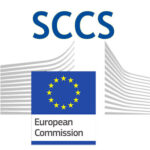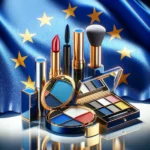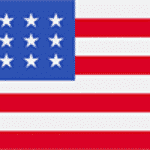June 2024: China: New testing methods and ban of 5 active medicinal ingredients

In march 2024, China amended the Technical and Safety Standards for Cosmetics to:
- ban 5 medicinal products (prostaglandins) from cosmetics.
- add new toxicological testing methods for the registration of new ingredients
- amend analytical methods for cosmetic products among which the analytical method for dioxane
While the ban of protaglandins is immediate, the new toxicolgical tests and amended analytical method will be applicable from dec 1st, 2024
June 2024: SCCS opinion on Hexyl Salicylate safety and (re) assessment for children below 3 years of age

The SCCS opinion on the safety of hexyl salicylate in cosmetics, dated of March 2024, concluded that it is safe for use up to:
- hydroalcoholic-based fragrances 2%
- All Rinse-off products 0.5%
- All Leave on products 0.3%
- Oral care (toothpaste and mouthwash) 0.001%
However, they did not conclude for children under 3 years of age, due to the lack of exposure scenario provided by industry.
The industry provided exposure scenario and SCCS will review the safety of above-mentioned levels for children under 3 years of age.
The outcome is expected for July 31th, 2024 at latest.
May 2024: The long awaited D4,D5,D6 REACH restriction has been published

Up until now, in EU, D4 was banned in rinse-off and leave-on cosmetic products and D5 was limited to 0.1% in rinse-off products (and banned in aerosols and sprays).
The Regulation on Cyclotetrasiloxane (D4), Cyclopentasiloxane (D5) and Cyclohexasiloxane (D6), restricting their uses to 0.1% w/w maximum in products in the EU, has been adopted and published last week: Regulation – EU – 2024/1328 – FR – EUR-Lex (europa.eu)
This regulation introduces new restrictions:
- From June 6th, 2026, D6 will be restricted to 0.1% in rinse-off products
- From June 6th, 2027, D5 and D6 will be restricted to 0.1% leave-on products
Products not compliant after these deadlines will have to be removed from the market.
April 2024: “Omnibus Regulation” published

The Regulation (EU) 2024/858, a.k.a. the “Omnibus NANO” regulation, has been eventually published on March 15th, 2024, in the Official Journal of the European Union. This regulation amends the EU Cosmetic regulation (EC 1223/2009) as regard the use of some nano materials in cosmetic products and implements several SCCS opinions on nano ingredients safety dated from 2021 to 2023.
For more information please refer to the original regulatory text.
April 2024: Amendment of the UK Cosmetic Regulation to restrict the use of BHT

An amendment to the UK Cosmetic Regulation has been published which restricts the use of Butylated hydroxytoluene
(aka BHT, CAS N# 128-37-0) in cosmetics up to:
- 0.1% in Toothpaste
- 0.001% in mouthwash and leave-on oral care products
- 0.8% in other leave-on and rinse-off products
This regulation will enter into force on April 22nd, 2024.
Transition period are granted by the regulation for products already placed on the market prior to 24th February 2025: they can continue to be made available on the market until 24th June 2025.
It is basically aligned with the EU Cosmetic Regulation, with a slight difference: the limitation of leave-on oral care products to 0.001%.
April 2024: The Commission Regulation (EU) 2024/996 of 3 April 2024 has been published on April 4 in the EU official journal.

This regulation amends the annexes of the EU cosmetic regulation according to SCCS opinions and implements:
- A ban of 4-Methylbenzylidene Camphor (SCCS/1640/21)
- New restrictions for Genistein, Daidzein (SCCS/1641/22), Kojic Acid (SCCS/1637/21), Arbutin, Alpha-arbutin (SCCS/1642/22), Retinol, Retinyl Palmitate and Retinyl Acetate (SCCS/1639/21)
- Updated/Additional restrictions for Triclosan and Triclocarban (SCCS/1643/22)
Transition periods to comply with these new restrictions start from December 2024 for triclosan/triclocarban and are different depending on the ingredient.
To know more about these new restrictions, please visit: Regulation – EU – 2024/996 – EN – EUR-Lex (europa.eu)
March 2024: “Omnibus Regulation” published

The Regulation (EU) 2024/858, a.k.a. the “Omnibus NANO” regulation, has been eventually published on March 15th, 2024, in the Official Journal of the European Union. This regulation amends the EU Cosmetic regulation (EC 1223/2009) as regard the use of some nano materials in cosmetic products and implements several SCCS opinions on nano ingredients safety dated from 2021 to 2023.
For more information please refer to the original regulatory text: Regulation – EU – 2024/858 – EN – EUR-Lex (europa.eu)
March 2024: SCCS draft opinion on Acetylated Vetiver Oil is out and open for comments until May 3rd, 2024

Acetylated Vetiver oil is a fragrance ingredient (CAS No 84082-84-8, EC No 282-031-1). The SCCS considers Acetylated Vetiver Oil (AVO) (with 1% alpha-tocopherol) safe when used at the intended maximum concentrations of 0.9% (w/w) in fragrance pump sprays, 0.05% (w/w) in deodorant sprays and 0.1% (w/w) in hairsprays and body lotion sprays.
It is worth noticing that:
- Only qualities containing 1% of alpha-tocopherol are considered as safe by SCCS
- While 0.2% in rinse-off products (soaps, shower gels, rinse-off conditioners, shampoo) is considered as safe by the SCCS, it is not mentioned in the conclusion since this opinion focuses on inhalation toxicity from sprayable products
- These percentages are identical to IFRA limitations (in related categories of product)
March 2024: The safety of Octoxinate is being re-assessed by the European Scientific Committee on Consumer Safety (SCCS)

Ethylhexyl Methoxycinnamate (EHMC) (CAS No. 5466-77-3/83834-59-7), a.k.a. Octoxinate, is a UV filter authorized between 7.5% and 10% in cosmetic regulations worldwide, except in Hawaï, US Virgin Island, Palau and Thaïlande where it is banned. This UV filter will be reassessed for its safety at 10% as a UV filter in cosmetic products by the SCCS, in particular regarding its endocrine disrupting properties. The opinion of the SCCS is expected at the very end of 2024.
March 2024: New hair dye in the process of being included into the annexes of the EU cosmetic regulation.

The EU Scientific Committee on Consumer Safety (SCCS) opinion on the safety of Hydroxypropyl p-phenylenediamine and its dihydrochloride salt (A165), in oxidative hair colouring products is now final. Although the SCCS cannot exclude a mild to moderate eye irritation potential, the SCCS considers that hydroxypropyl p-phenylenediamine and its dihydrochloride salt (CAS/EC No. 73793-79-0/827-723-1 and 1928659-47-5/-) are safe when used in oxidative hair colouring products up to a maximum on-head concentration of 2%. This new hair dye will be part of a future draft regulation to add it to hair dyes authorized by the EU Cosmetic Regulation 1223/2009.
February 2024: The EU Strengthens the policy on sustainability claims by adopting the Directive Empowering Consumers for the Green Transition through Better Protection against Unfair Practices and Better Information (a.k.a the “Greenwashing Directive”)

This text intends to addresses issues such as greenwashing, early obsolescence, and the use of unreliable sustainability labels by providing consumers with comprehensive information on product durability, reparability, and environmental impacts. It includes definitions regarding environmental claims, sustainability labels, certification schemes, and sustainability information tools.
The proposal complements initiatives like the Green Claims directive and Eco-design for Sustainable Products Regulation initiatives, aiming to introduce further requirements for environmental claims and sustainability standards. To be effective, this greenwashing directive will have to be transposed into national right of EU members within 18 months from adoption and provision of the directive will have to apply at latest within 2 years. Expect some countries like France or Germany to do it earlier.
February 2024: SCCS opinion on the safety Titanium Dioxide in oral cosmetic products

A preliminary opinion on Titanium dioxide (TiO2) in oral cosmetics, published in December 2023, which has been open for comments, is being finalized.
This opinion covers more than 80 grades of TiO2, 40 pigmentary and 44 nano grades.
While 2 nano grades are considered safe on a genotoxicity standpoint, the SCCS requests additional testing to rule out the genotoxic potential for all other qualities.
SCCS also highlights the need for additional data, for all nano grades, regarding the risks of local effects resulting from long-term exposure of the oral mucosa to TiO2 nanoparticles.
February 2024: Adoption by the EU Risk Assessment Committee of the CMR 1B classification of Tea Tree Oil

The European Chemical Agency has officially adopted on November 30th2023 the CMR 1B classification of Tea tree oil.
This ingredient will be part of the future 23rd Adaptation to Technical Progress of the CLP.
This triggers the need of a safety review by the Scientific Committee on Consumer Safety (SCCS) to support the continued used of this material in cosmetics in Europe.
In the absence of any safety review by SCCS, or in case of a negative opinion of the SCCS regarding its use in cosmetics, the ingredient will be forbidden in a couple of years.
February 2024: Ban on PFAS in Cosmetics: Navigating the No PFAS Act’s Impact

In parallel of the work undertook by EPA on PFAS, The Bills HR 6519 aka “No PFAS in Cosmetics Act”, has been introduced to the House of representative and referred to subcommittee on Health.
This bill intends to amend the Federal Food, Drug, and Cosmetic Act (aka MoCRA) to ban the use of intentionally added perfluoroalkyl or polyfluoroalkyl substance in cosmetics.
The definition of `perfluoroalkyl or polyfluoroalkyl substance’ in this bill is the following: a substance in a class of fluorinated organic chemicals that is man-made and has at least 1 fully fluorinated carbon atom. The Bill set the deadline for applicability to jan 1, 2025.
January 2024: draft text of the 22nd Adaptation to Technical Progress of the EU CLP 1272/2008 regulation submitted to the WTO

On January 18th, a draft regulation amending the EU hazardous classification of 40 substances has been submitted to the World Trade Organisation for review. Amongst the 40 substances 14 might be present in cosmetics.
It is worth noticing that 4 of these 14 substances have been assigned a CMR classification. This triggers the need for a positive opinion from the Scientific Committee on Consumer Safety to secure the continuation of use of these 4 substances in cosmetics.
January 2024: UPDATE ON REACH restriction on D4, D5, D6

The Draft Regulation on Cyclotetrasiloxane (D4), Cyclopentasiloxane (D5) and Cyclohexasiloxane (D6), restricting their uses to 0.1% w/w maximum in cosmetic products, is progressing towards adoption.
The Draft regulation has been submitted to the EU parliament and the EU council, and unless there is an objection it will be adopted and published. This Regulation will amend the Annex XVII of the REACH Regulation and it is expected to be published at latest in April 2024.
Enforcement dates for cosmetics are thus shifting to:
- Publication date + 2 years (at latest April 2026) for rinse-off products
- Publication date + 3 years (at latest April 2027) for leave-on products
January 2024: The 21st Adaptation to Technical Progress aka regulation EU 2024/197

The 21st Adaptation to Technical Progress aka regulation EU 2024/197, amending the annexes of the CLP regulation EU 1272/2008, has been published on jan 5th 2024. Amongst other classification update, it is worth noticing that two ingredients used in nail products have been assigned a CMR classification by this 21st ATP:
- DIMETHYLTOLYLAMINE (CAS 99-97-8)
- TPO (TRIMETHYLBENZOYL DIPHENYLPHOSPHINE OXIDE CAS 75980-60- 8)
Products containing any of these two ingredients will be forbidden in cosmetic products at latest on feb 1st, 2025 and will have to be withdrawn.
January 2024: General Product Safety Regulation (GPSR) requirements for cosmetics sold on line

The new transversal regulation EC 2023/988 (aka GPSR) set some provisions in article 19, for products sold online/in distance sales, and applicable to cosmetics. Cosmetics Europe clarified the requirements of this article 19 in an online guidance: CVCI_GPSR_Art19_CE_guidance_28-11-2023.pdf (cosmeticseurope.eu)
In a nutshell, it is the responsibility of the economic operator selling cosmetic products online to ensure that the following information is clearly and visibly indicated at online / distance points of sales:
- Name, postal and electronic address of the responsible person
- Information for identification of the product: picture, function of the product, any other product identifier
- Precaution to be observed in use, warnings and precautionary statements
January 2024: SCCS opinion on 2 ingredients, the safety of Methyl paraben and Benzophenone-4 reaffirmed

Two recent SCCS opinion were published end of December 2023 and reassess the safety of ingredients denounced for their potential endocrine disrupting properties.
Although already limited by the EU cometic regulation, Methyl paraben and Benzophenone-4 were on the priority list of the EU commission for reassessing their safety in regard to their potential endocrine disrupting properties.
The Scientific Council on Consumer Safety stated that, considering all available data and the concerns related to endocrine activity:
– Methylparaben is safe as a preservative in cosmetic products at concentrations of up to 0.4% (expressed as acid)
– Benzophenone-4 is safe when used as UV filter up to a maximum concentration of 5% in sunscreen, face and hand cream, lipstick, sunscreen propellant spray and pump spray, when used separately or in combination.
December 2023: Cosmetics Direct is alive!

MoCRA introduced the obligation to register facilities and list products (Section 607 of the FD&C Act). Those actions can be performed through Cosmetics Direct. After months of waiting, the platform is now open and available on this link : https://direct.fda.gov/apex/f?p=100:LOGIN_DESKTOP . As a reminder, the FDA will not enforce the registration requirement for owners or operators of facilities that began manufacturing or processing a cosmetic product after December 29, 2022, or the listing requirement for cosmetic products first marketed after December 29, 2022, until July 1, 2024.
December 2023: Cosmetics Europe has launched COSMILE Europe app

It eases the access to details on cosmetic compositions by scanning barcodes, ingredient lists, or searching specific ingredients via a mobile phone. The database is designed to help consumers understand why certain ingredients are in their cosmetic products, which properties they have, how they are regulated in the EU and many more. This unbiased database provides consumers with factual and scientific insights, without imposing choices or ratings. It is a practical tool for informed and transparent decision-making.
December 2023: Ban of the PFAS in the USA

Perfluoroalkyl and polyfluoroalkyl substances are the new public enemy for many countries around the globe. With MoCRA requirements, an FDA report regarding the safety of those ingredients is expected for the end of 2025.
In parallel, a bill was introduced on November 30th to ban PFAS in cosmetic products (HR 6519).
The modalities regarding this ban are not known as the text is not available yet.
November 2023: New regulation to come

In our information letter 117, Biorius informed you about a new regulation to come implementing:
- A ban of 4-Methylbenzylidene Camphor (SCCS/1640/21)
- New restrictions for Genistein, Daidzein (SCCS/1641/22), Kojic Acid (SCCS/1637/21), Arbutin, Alpha-arbutin (SCCS/1642/22), Retinol, Retinyl Palmitate and Retinyl Acetate (SCCS/1639/21)
- Updated/Additional restrictions for Triclosan and Triclocarban (SCCS/1643/22)
The timeframe has shifted a bit. The regulation will be submitted to vote soon and we expect a publication of this new regulation end of Q3 2024.
It is also worth noticing that the wording of the warning for vitamin A changed. The new wording in the text to be voted is “contains vitamin A. consider daily intake before use”
November 2023: FDA announces delay in MoCRA enforcement

At the beginning of the month, the FDA declared a postponement for the launch of the platform allowing facility registration and product listing.
Furthermore, the FDA has issued the “Compliance Policy for Cosmetic Product Facility Registration and Cosmetic Product Listing.” According to this guidance, the FDA will not enforce the requirements for cosmetic product facility registration and cosmetic product listing for an additional six months after the December 29, 2023, statutory deadline, or until July 1, 2024. This extension aims to provide the regulated industry with extra time to comply with these requirements.
Additionally, the FDA will not enforce the registration requirement for owners or operators of facilities that began manufacturing or processing a cosmetic product after December 29, 2022, or the listing requirement for cosmetic products first marketed after December 29, 2022, until July 1, 2024.
October 2023: UK’s new opinions concerning Kojic acid and BHT

The UK’s Scientific Advisory Group on Chemical Safety of Non-Food and Non-Medicinal Consumer Products (SAG-CS) has recently published two new opinions concerning Kojic acid and BHT. The conclusions are closely aligned with the EU newly regulated limits for BHT and the suggested future limits for Kojic acid. These conclusions may lead to potential amendments in the UK cosmetic regulation to incorporate these limits.
October 2023: USA – Declaration of Severe Adverse Event

According to the MoCRA, serious adverse events must be reported to the FDA within 15 business days. In order to help brand to provide with the all necessary information, authorities recommend to use the form 3500A .
This form is available on MedWatch. It can be completed online, sent by e-mail (CAERSCosmetics@fda.hhs.gov), or by a postal delivery to :
FDA CDER Mail Center
White Oak Campus, Building 22, G0207
10903 New Hampshire Ave, Silver Spring, MD 20993
October 2023: China – Update of the TSSC

On 28 August 2023, The notification 2023-41 has been published by the NMPA. This amendment to the Technical and Safety Standard for Cosmetics (TSSC) adds a new substance to the list of banned substances on line 1285: Benvitimod.
This substance is known for its medication used for he treatment of plaque psoriasis. It was approved for medical use in the United States in May 2022.
The ban is effective immediately.
September 2023: REACh microplastic restriction regulation published

The EU COMMISSION REGULATION (EU) 2023/2055, amending Annex XVII of REACH to restrict the use of microplastic particles, was adopted on September 26th, and will enter into force on oct 17th, 2023. Microplastic beads are immediately banned as a first step. Then the phasing out of microplastics spans from 2027 to 2035. Particular attention should be paid to the following deadlines:
- 4 years for rinse-off products
- 6 years for leave-on products (including sunscreens) and microplastics used for the encapsulation of fragrances
- In 8 years, labels on lip and nail products must carry the statement, “This product contains microplastics”
September 2023: SCCS Opinion on Methyl Salicylate

The SCCS issued an opinion regarding the safety of Methyl Salicylate for Children under 6 years of age. Since no specific data was provided by the applicant for children below 6 month, the SCCS was not able to conclude. The SCCS acknowledge the safety of Methyl Salicylate in cosmetic products intended for children of age 0.5-6 years when used up to a maximum concentration of 2.52% in toothpaste. For other products, the SCCS considered only the use of shower gel, hand soap, shampoo, body lotion, face cream, hand cream, lip products and hair conditioner. They concluded that Methyl Salicylate is safe in these specific cosmetic products up to 0.02% for children of age 0.5-3 years, and up to current limitations of the regulation for children of age 3-6 years.
September 2023: Toxicity of UV filters for corals – ANSES report

French ANSES – the French National Agency in charge of Occupational, Environmental and Food Safety – published a report to characterize risks of chemicals for corals. Various chemical were part of the study, including metals, pesticides, … and UV filters. For each chemical assessed, the ANSES expert panel compared available ecotoxicity data for corals with the concentration measured in marine environments. The expert panel identified a risk (medium confidence) for oxybenzone (BP-3), octinoxate (EHMC) and octocrylène (OC), and a risk (very low confidence) for enzacamene (4-MBC) and Ethylhexyl Salicylate (EHS). The ANSES recommended to forbid claims and/or pictograms related to safety of sunscreen cosmetic products for marine environment or corals, as long as they contain these 5 UV filters.
September 2023: Aminomethyl Propanol

Austria announced its intention to submit a Classification and Labelling Harmonized (CLH) proposal for AminoMethyl Propanol (CAS 204-709-8) to the European CHemical Agency (ECHA). The proposal contains a CMR1B classification. The CLH dossier is expected to be submitted to ECHA Risk Assessment Committee before the end of the year (Anyone with relevant information on the identity or hazard properties of AminoMethyl Propanol (CAS 204-709-8) is encouraged to provide this information to the dossier submitter during the early stages of the process, or at the latest during the consultation).
August 2023: Health Canada published a draft amendment to its Hot list
The suggested modifications include an addition of polyhydroxyacids and bionic acids to the limitation of AHA and a higher limitation for non-professional products of 18% of AHA equivalents. Moreover, retinol will be restricted to 0.2% in leave-on products (no change for rinse-off). All modifications are available on Health Canada website. The draft is open for comment until 11 October 2023.
August 2023: MoCRA – Platform for facility registration and cosmetic product listing

The FDA has just released a document outlining how the platform for facility registration and cosmetic product listing under MoCRA may look like. This document is open for comments, and the consultation period ends on September 7th. The platform will go live in October (the exact date is yet to be determined). The deadline to list ALL cosmetic products remains unchanged: December 29, 2023 for the products that were already on the US market on December 29, 2022. For cosmetic product first marketed after December 29, 2022, the deadline for listing is within 120 days of marketing the product, or within 120 days of December 29, 2023, whichever is later.
July 2023: Extended list of allergens in the EU

The Regulation on labeling of cosmetic allergens has been published. 56 new allergen substances are added to the 24 current ones. They must be displayed in the product’s ingredient list on pack if they exceed the threshold limits. Industry has 3 years to place compliant labels on the market and 5 years to withdraw non-compliant labels from the market.
July 2023: UK Extension

The initial transition period established by the Government of the United Kingdom about UKCA marking and labeling has been extended until 31 December 2024 for UKCA marking and 31 December 2027 regarding the provisions for UKCA labeling, importer information, and responsible persons’ information.
July 2023: MoCRA

On December 29th, 2022, the most significant amendment of the US Cosmetic Regulation since 1938 was enacted. It will involve obligation to notify cosmetic products, new labeling rules, revision of test methods… .
Get in Touch
Need a piece of advice, a quotation or answers to your questions? Contact us…
Fill in this form or contact us directly: info@biorius.com – We will answer as soon as possible!
As specialists in cosmetic Regulations for more than 15 years, Biorius offers a reliable turnkey solution for placing cosmetic products in various markets:
- First Class specialists in cosmetic regulations in Europe, the United Kingdom, the United States, and in more than 60 countries
- 50 regulatory experts, toxicologists, pharmacists, and chemists to serve you.
- A unique model that guarantees you both the fastest turnaround possible and high-quality services. Curious? Ask us to know more!
- No hidden costs: Biorius does not charge you for any question, call, or meeting.
- A best-in-class IT tool, free of charge, and saving a lot of your time.
- More than 1,500 international clients have already chosen Biorius!
- We evaluated more than 100,000 products and never had any compliance issues (fines, withdrawals from the market, etc.) in 15 years of existence.
"*" indicates required fields


